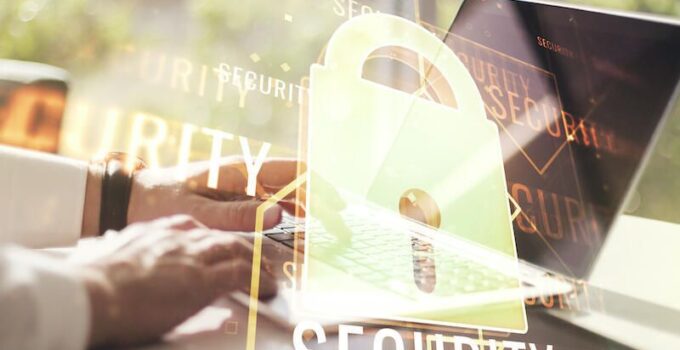Thinking about allowing your company’s employees to work remotely? That can be an attractive proposition, as remote work has been shown to improve performance and productivity, boost employee retention, and even save costs.
However in tandem with the benefits of remote work, you need to keep in mind the fact that it has challenges too. And one of the most important challenges that you will want to factor into your decision are the potential security risks attached to remote work.
After all the fact of the matter is that when employees are working from outside the office, they may be using an unsecured public network, personal devices, or may share their work devices with others. All these things represent potential security risks that could compromise your work network and data security.
The good news is that it is definitely possible to allow for remote work while minimizing the security risk. But to do that you need to be proactive about it.
Basic Cybersecurity Precautions

Source: coxblue.com
First and foremost, you need to take all the basic IT security precautions that are necessary to protect your work network and the devices of your remote workers. For the most part these steps are simple, yet they can have a huge impact on your company’s cybersecurity as a whole.
The basic cybersecurity precautions that you need to prioritize include:
- Require better passwords for access to your work network. Ideally passwords should be more than 10 characters in length, contain a mix of uppercase, lowercase, numbers and symbols, and not be a word that can be found in a dictionary.
- Use antivirus and internet security tools that target spyware, malware, viruses, trojans, worms, phishing scams, and so on. It should be set up to be as secure as possible, and typically you’ll want the firewall to block all incoming connections.
- Implement dynamic authentication such as multi-factor or two-factor authentication to ensure only employees are able to access your work network. The easiest way to implement this is via text messages to your employees’ phones.
- Use a Virtual Private Network (VPN) for employees who are using a public (and maybe unsecured) network. Be sure to check that it is fast, reliable, uses encryption and most importantly does not log user data.
- Update all software with the latest security patches on a regular basis using tools that automate updates. Keep in mind that ‘software’ in this case includes the operating system that you’re using.
- Provide cybersecurity training to all employees. It should focus on what they can do to prevent any issues – such as how to identify and avoid phishing scams, in the form of suspicious links or attachments.
On top of all this it may be a good idea to consider on-premise network security services that can monitor your work network and check that it is not vulnerable. It can act as a second layer of defense should any user become compromised.
Monitor Employee Behavior

Source: shrm.org
Alongside the basic cybersecurity precautions listed above, it would also be a good idea to monitor the behavior of your employees. One way to do so is with a tool that will track all the activities of remote workers and let you view it live or via reports.
The features are fairly comprehensive and will enable you to track both app and web usage. As such you will be able to check and see if employees are running any potentially malicious software, or if they’re visiting suspicious websites.
Controlio can also view email and IM communications as well as monitor file transfers. In this way if you suspect an employee may be compromised you can look at the logs related to them to see if they’ve transmitted any data that they shouldn’t have, or transferred any files.
If necessary you can even survey employees more closely using Controlio. It can be used to capture screenshots at fixed intervals so that you are able to literally see what employees are doing. It can also record keystrokes, which will let you check on what employees are typing into their keyboards.
It should be noted that you can opt to have Controlio run in ‘stealth’ mode so that it is completely invisible. It can be installed as part of a package of cyber security for remote workers, and will run unnoticed in the background.
With all this data, you should be able to spot any suspicious behavior on the part of employees that may be a security risk. In some cases it may be employees who are accessing websites that aren’t work related and contain phishing scams or other undesirable elements. On the other hand it may even be malicious actors looking to intentionally harm your company.
To put it simply, it will let you identify these risks and take action against them beforehand. Its features will even let you filter certain websites and block access to them so that employees can’t access them via the work network or from work devices.
Conclusion

Source: snapcomms.com
Between basic cybersecurity precautions and monitoring the behavior of your employees, you should be able to reduce the security risk posed by remote work and ensure it is minimal. However there are no guarantees and you need to remember that it is almost impossible to eliminate all risk.
Instead, you need to look at the security risk as an ongoing effort and strive constantly stay on top of it. At least one person in your company should be tasked with keeping themselves up to date on cybersecurity issues, and making changes to your company policy when required to ensure it is always protected from a cybersecurity standpoint.
Although it will take time and effort to reduce the security risk of remote work, it is still definitely worth doing. For starters many of these steps will boost your cybersecurity as a whole – which makes them something that your company should do anyway. And on top of that implementing them will mean you’re able to enjoy the benefits of remote work too.




